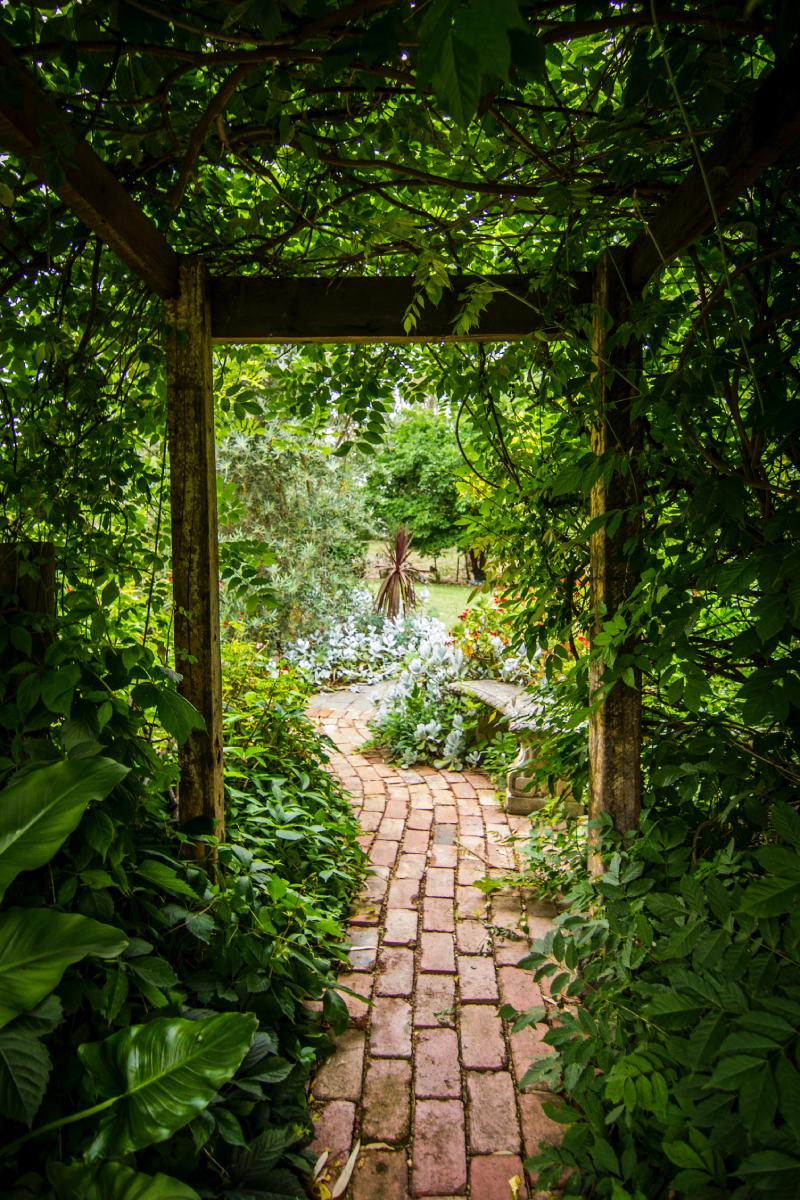Introduction
Welcome to the beautiful world of sustainable landscaping-a method that doesn’t just turn your outdoor spaces into stunning retreats and plays a significant role in preserving our planet. This article will help you understand what sustainable landscaping is, why it matters, and the fundamental principles that govern it.
Understanding Sustainable Landscaping
Sustainable landscaping is a holistic approach to garden design and outdoor space management that strives to reduce environmental harm and enhance natural biodiversity. This practice goes beyond merely planting trees and flowers-it’s about creating a balanced ecosystem that respects nature’s rhythms and doesn’t deplete the earth’s resources. The designs you create, the materials you use, and the maintenance practices you follow all come together to shape a beautiful and self-sufficient landscape.
Why Sustainable Landscaping Matters
Sustainable landscaping matters for several reasons. Firstly, it significantly contributes to conserving water-a precious and increasingly scarce resource. A sustainable landscape’s plants and design elements typically require less water than conventional landscapes.
Secondly, sustainable landscaping reduces our dependency on synthetic fertilizers and pesticides. These chemicals can contaminate our water sources and harm beneficial insects and microorganisms in the soil. Instead, sustainable landscapes rely on natural, organic alternatives and practices encouraging a healthy, balanced ecosystem.
Lastly, sustainable landscaping has aesthetic and psychological benefits. It creates visually pleasing and unique outdoor spaces that bring us closer to nature, promote biodiversity, and offer an opportunity for a peaceful retreat in our backyards.
Key Principles of Sustainable Landscaping
The key principles of sustainable landscaping are designed to create harmony between our outdoor spaces and the natural world.
The first principle is sustainability-the landscape should be designed to sustain itself as much as possible with minimum intervention. This means using native or well-adapted plants that thrive in your specific climate and soil conditions, requiring less water and maintenance.
Next is biodiversity-encouraging a variety of plant species and creating habitats for local wildlife. This promotes a healthy, balanced ecosystem that can better resist pests and diseases.
The third principle is soil health-using organic amendments and compost to nourish the soil. Healthy soil is the foundation of a sustainable landscape, as it supports plant growth and stores water and nutrients.
Lastly, the principle of water conservation-implementing efficient irrigation practices and using rainwater harvesting systems where possible.
Together, these principles form the foundation of sustainable landscaping, helping us create outdoor spaces that are beautiful and beneficial to our environment. In the following sections, we’ll explore these principles in more depth, providing practical tips and advice on how to apply them in your outdoor spaces.
Planning a Sustainable Landscape
Planning is the first and most crucial step in creating a sustainable landscape. By assessing your current landscape, selecting the right native plants, and designing with water conservation in mind, you can lay the groundwork for a beautiful, eco-friendly outdoor space.
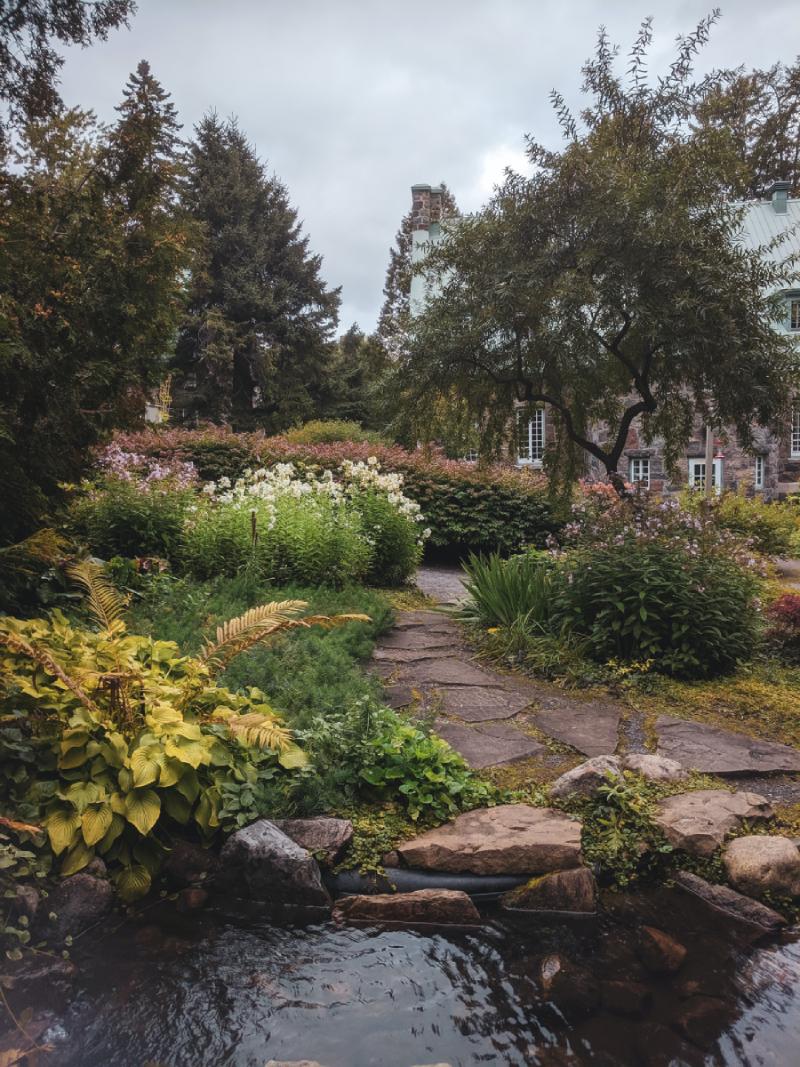
Assessing Your Landscape
To begin the planning process, first, assess your current landscape. Look at your space critically-observe the sunlight patterns, note the soil type, and identify the existing plant species. Are there areas where water collects or drains away quickly? Are there plants that seem to struggle or thrive?
The aim here is to understand the microclimates in your garden and the specific needs of different areas. Armed with this knowledge, you can select plants and design elements best suited to each part of your garden, minimizing the need for excessive watering or synthetic fertilizers and pesticides.
Incorporating Native Plants
Choosing the right plants is key to the success of your sustainable landscape. Native plants - naturally occurring in your area - are an excellent choice because they are adapted to local climate conditions and soil types.
Not only are native plants typically more resistant to pests and diseases and require less water and maintenance than exotic species. Plus, they play a critical role in supporting local wildlife, providing food and habitat for birds, bees, butterflies, and other beneficial insects.
Many garden centers now carry a selection of native plants, and your local extension service or native plant society can advise on the best species for your specific area.
Designing for Water Conservation
Water conservation is a fundamental principle of sustainable landscaping. You can significantly reduce water usage by designing your landscape with this in mind.
The first step is to group plants with similar water needs-this is known as hydrozoning. Doing this ensures that plants only get the amount of water they need, preventing overwatering or underwatering.
Next, consider incorporating a rain garden or a bioswale into your design. These are areas designed to collect and absorb rainwater, reducing runoff and making the most of this natural resource.
Finally, replace large areas of the thirsty lawn with drought-tolerant ground covers or hardscaping like gravel or stepping stones. Not only will this save water, but it can also create interesting visual contrasts in your landscape.
In the next section, we’ll delve deeper into water conservation practices, exploring efficient irrigation systems and other techniques that can help you save water in your sustainable landscape.
In conclusion, planning your sustainable landscape requires thought and consideration. Still, the rewards-both for you and the environment-are worth it. As you move through this planning phase, remember to consider sustainability principles, making choices that respect and enhance the natural environment.
Water-Smart Landscaping
Water is a precious resource, and sustainable landscaping aims to minimize its use. Embracing water-smart landscaping practices can help you reduce water consumption, save time and money, and create a more resilient landscape. This section will delve into efficient irrigation systems, rainwater harvesting, and the benefits of choosing drought-tolerant plants.
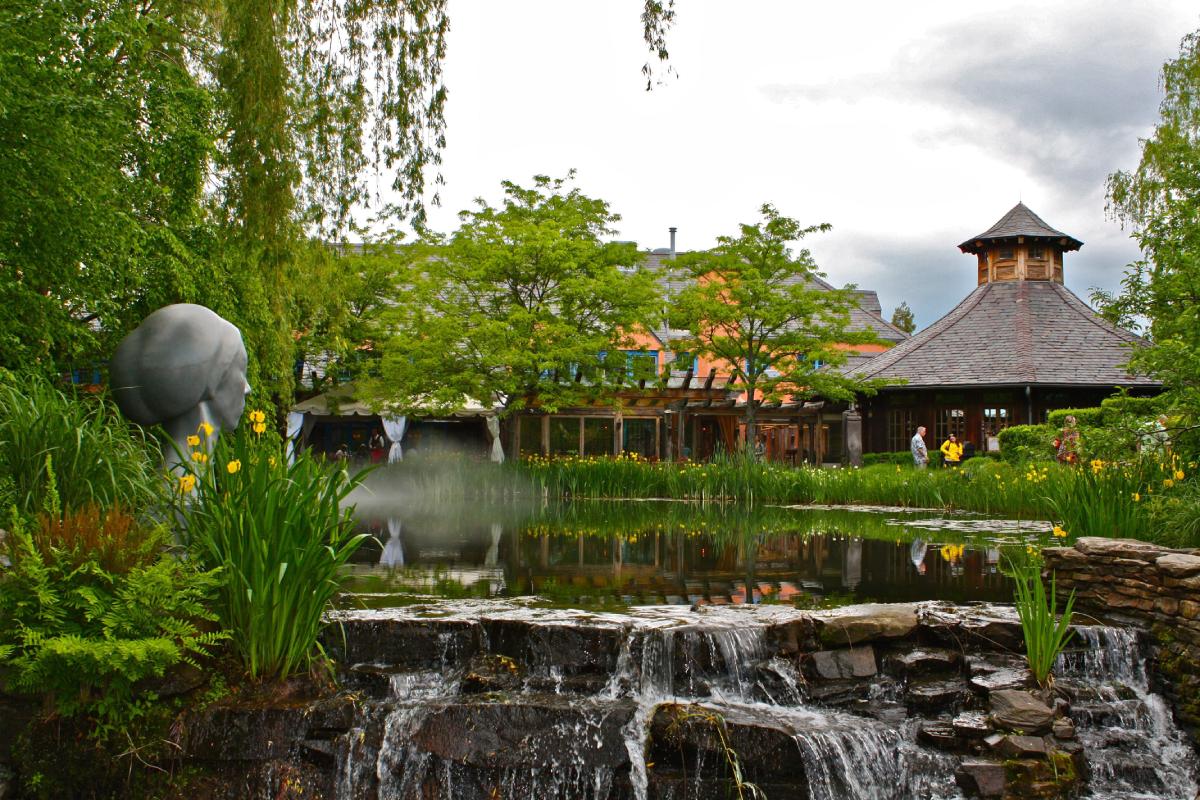
Efficient Irrigation Systems
Traditionally, many landscapes rely on sprinkler systems that can waste a lot of water through evaporation, wind, or runoff. A more sustainable alternative is efficient irrigation systems like drip irrigation and soaker hoses.
Drip irrigation delivers water directly to the base of the plant. This system targets the root zone, ensuring that the water goes exactly where it’s needed and reducing losses from evaporation. Soaker hoses also emit water directly into the soil, offering similar benefits.
Another important aspect of efficient irrigation is timing. Watering in the early morning when temperatures are cooler minimizes evaporation. Also, consider installing a rain sensor to prevent your system from running when it’s not necessary.
Rainwater Harvesting
Rainwater harvesting is a fantastic way to utilize a free resource while reducing your reliance on municipal water. Collecting rainwater for use in your garden can be as simple as installing a rain barrel at your downspouts or as complex as creating a rainwater cistern system.
In addition to providing an excellent water source for your plants, rainwater harvesting can help control stormwater runoff, a major source of pollution in our waterways. It’s a win-win for both your garden and the environment.
Drought-Tolerant Plants
A critical strategy in water-smart landscaping is the use of drought-tolerant plants. As mentioned earlier, native plants are often a good choice as they are adapted to local rainfall levels. However, there are also many non-native plants available that can thrive with minimal watering.
When selecting drought-tolerant plants, look for thick, succulent leaves, deep root systems, and a waxy or hairy leaf surface. These are all adaptations that help plants conserve water. Some popular drought-tolerant plants include lavender, sage, yucca, and ornamental grasses. Your local nursery or extension service can provide recommendations tailored to your region.
Water-smart landscaping is a key element of sustainable landscaping. With a combination of efficient irrigation, rainwater harvesting, and drought-tolerant plants, you can create a landscape that’s not only beautiful but also eco-friendly and resilient. In the next section, we’ll explore improving soil health in your sustainable landscape, a critical factor in plant health and water conservation.
Planting for Biodiversity
Planting for biodiversity is a critical aspect of sustainable landscaping. It means incorporating a variety of plants that offer different benefits to create a vibrant, healthy, and balanced ecosystem within your garden. This section will look at the benefits of a biodiverse garden, how to attract beneficial insects, and ways to incorporate a variety of plants.
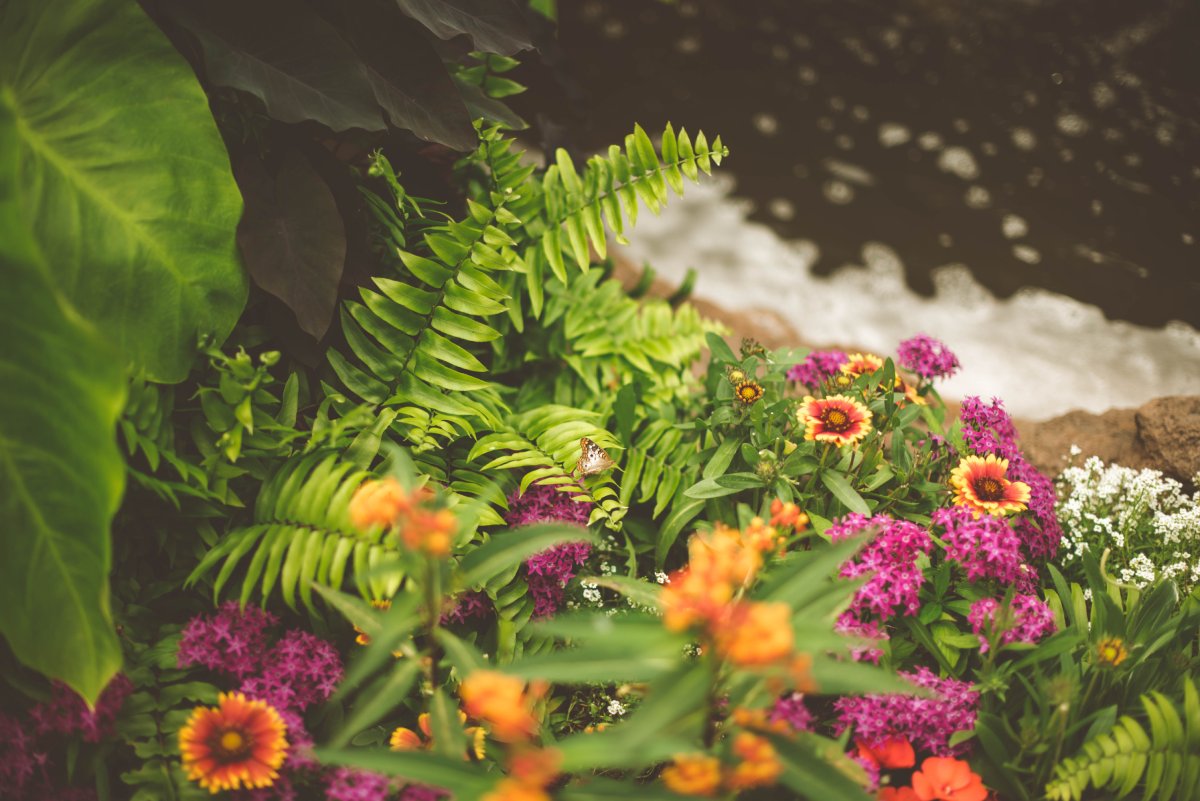
Benefits of a Biodiverse Garden
A biodiverse garden is not only visually interesting, but it’s also an effective way to improve the health of your landscape. A mixture of different plants can enhance soil health by providing a range of organic materials. Biodiversity can also lead to fewer pest problems, as a monoculture (a single type of plant) can attract specific pests, leading to infestations.
Moreover, a diverse landscape offers a range of habitats for wildlife, including birds, beneficial insects, and small mammals. Providing such habitat can contribute to local biodiversity conservation efforts, especially in urban areas where wildlife habitats may be scarce.
Attracting Beneficial Insects
Beneficial insects play a crucial role in maintaining the health of a garden. Pollinators like bees and butterflies help plants reproduce, while predatory insects like ladybugs and spiders keep pests in check.
To attract these helpful creatures, consider incorporating plants that provide nectar and pollen throughout the growing season. This may include perennials, annuals, and flowering herbs. It’s also beneficial to provide habitats for these insects, such as piles of leaves or twigs, undisturbed grassy areas, or even specially designed insect hotels.
Incorporating a Variety of Plants
Incorporating a variety of plants in your garden ensures that you provide a range of habitats, food sources, and visual interest. This could mean mixing trees, shrubs, perennials, and annuals.
When selecting plants, think about the different layers of a natural ecosystem. Tall trees make up the canopy, where smaller trees and shrubs grow. Beneath these, you find herbaceous plants, groundcovers, and finally, the mulch layer. Replicating this structure can help create a more natural and sustainable landscape.
Remember, diversity should also extend to the types of plants you select. Choose plants with different growth habits, leaf shapes, flower colors, and bloom times. This variety will not only create a more engaging landscape. Still, it will also cater to the needs of different wildlife throughout the year.
In essence, planting for biodiversity brings your landscape to life. It creates a self-sustaining system that requires less intervention in the form of pest control or fertilization. It’s an approach that benefits your garden’s health and contributes positively to the broader ecosystem. Up next, we’ll dive into the world of sustainable lawn care and explore alternatives to traditional lawns that offer both beauty and ecological benefits.
Soil Health and Composting
At the core of every thriving landscape is healthy soil. Soil health is pivotal for sustainable landscaping because it directly impacts the growth and well-being of your plants. The healthier your soil, the stronger and more resilient your plants will be. This section delves into the importance of soil health, the benefits of organic fertilizers and amendments, and the wonders of home composting.
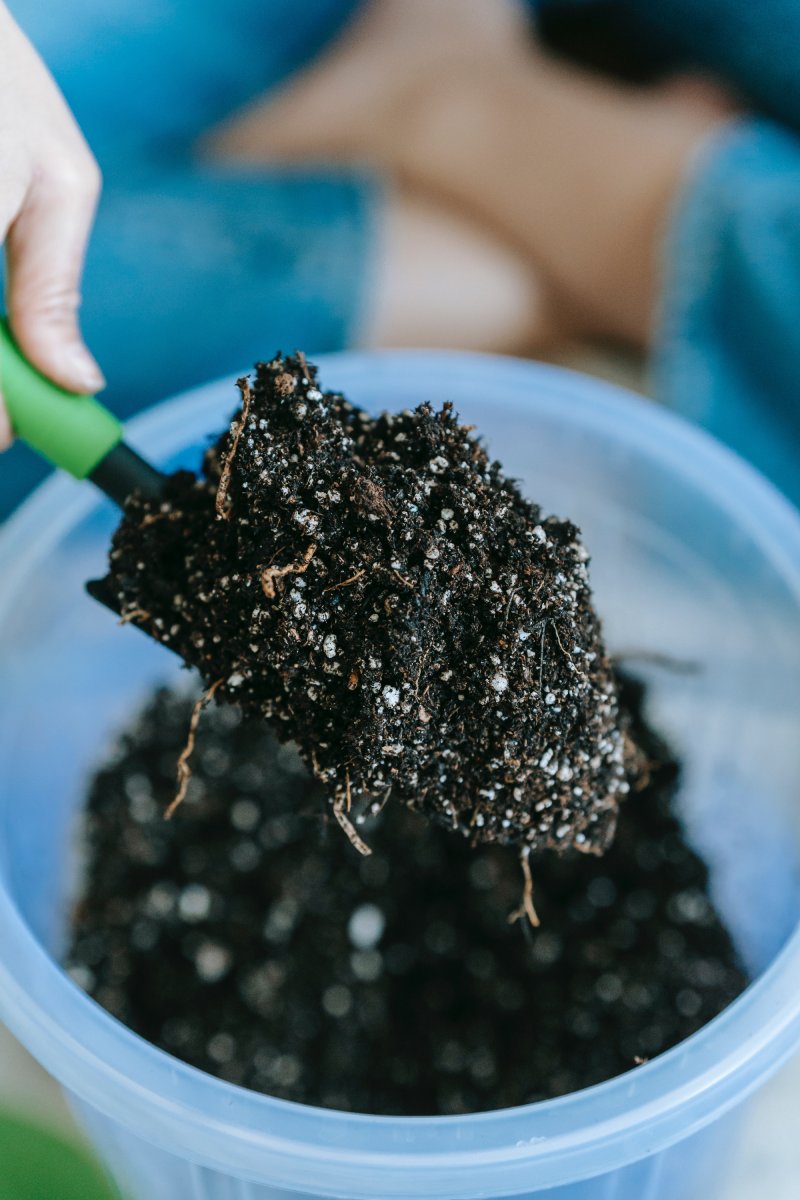
Importance of Soil Health
Soil health is the backbone of a flourishing garden. Healthy soil is alive, teeming with beneficial microorganisms and insects that break down organic matter, recycle nutrients, and contribute to soil structure. This microbial activity is crucial for plant health as it helps plants access the necessary nutrients.
Further, healthy soil has a good structure, with a balance of sand, silt, and clay particles. This structure allows for good water drainage while retaining enough moisture for plants. It also ensures enough air space for roots to breathe.
Maintaining and improving soil health should be a top priority for any sustainable gardener. Regularly adding organic matter, minimizing tillage, and practicing crop rotation are all effective strategies for boosting soil health.
Organic Fertilizers and Amendments
Unlike synthetic fertilizers that can harm soil health over time, organic fertilizers and amendments nourish the soil and the plant. Organic amendments like compost, manure, bone meal, and seaweed enrich the soil with a wide range of nutrients.
Moreover, these amendments improve soil structure and increase its capacity to hold water and nutrients. As a result, you’ll find your plants are healthier, more resilient to pests and diseases, and more productive.
Composting at Home
Home composting is an excellent way to recycle kitchen and garden waste while creating a rich soil amendment. Compost adds beneficial microbes to the soil, enhances soil structure, and provides slow-release nutrients to plants.
The basics of composting are quite simple. Combine green waste (such as vegetable scraps, coffee grounds, and fresh grass clippings) with brown waste (like dried leaves, straw, or shredded paper) in a compost bin or pile. Over time, this material will decompose into a dark, crumbly substance that is fantastic for your garden.
Starting a compost pile at home requires minimal effort. It can significantly reduce the amount of waste you send to the landfill. It’s a win-win for you and the environment.
To sum up, maintaining soil health is fundamental to sustainable landscaping. It’s about nourishing the soil with organic matter, using organic fertilizers and amendments, and harnessing the power of composting. By caring for the soil, you’re paving the way for a robust, resilient, and stunningly beautiful landscape. The following section continues our sustainable journey by examining eco-friendly pest and weed management techniques.
Natural Pest Control
Healthy gardens attract all kinds of life, including unwanted pests. While these invaders can pose challenges, there are other answers than turning to harmful chemical pesticides. This section will address the dangers of chemical pesticides, the benefits of encouraging beneficial insects, and how to create your DIY natural pesticides.
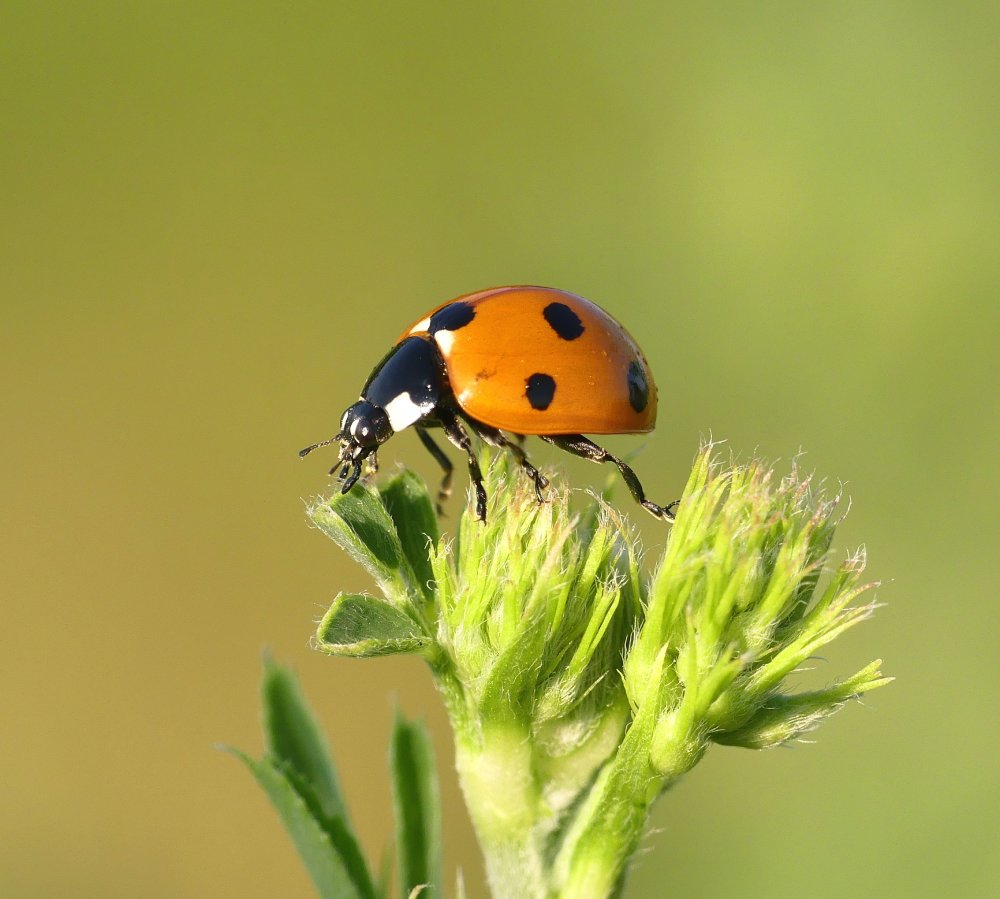
Dangers of Chemical Pesticides
While they may quickly eliminate pest problems, chemical pesticides also present significant risks. They can contaminate the soil, water sources, and beneficial plants, potentially harming wildlife and humans. Over-reliance on chemical pesticides also contributes to developing pesticide-resistant pests, escalating the chemical arms race in our gardens.
Moreover, these substances kill indiscriminately, wiping out beneficial organisms alongside pests. This disruption can throw your garden ecosystem off balance, potentially leading to worse pest outbreaks in the future.
Encouraging Beneficial Insects
Instead of reaching for a chemical spray, consider ways to attract beneficial insects to your garden. Many insects, such as ladybugs, lacewings, and certain types of wasps and beetles, are predators of common garden pests. By creating a garden attractive to these beneficial insects, you can establish a natural form of pest control.
Plant various native plants, which often provide the best food and habitat for local beneficial insect populations. Provide a water source, leave some areas of your garden a bit wild, and avoid chemical pesticides that could harm beneficial insects.
DIY Natural Pesticides
When pest infestations occur, natural DIY pesticides can be a better choice. Many effective recipes can be made with ingredients you likely already have at home.
For example, a simple soap spray can tackle many pests. Combine a few drops of mild dish soap with a liter of water, and spray it directly onto pests. Natural ingredients like garlic, hot peppers, or essential oils can also create effective home remedies.
Another method involves introducing biological controls, such as parasitic nematodes or other predatory insects, which can help keep pest populations in check.
Before applying any remedy, always identify the pest correctly to ensure the chosen method will be effective and not harm other beneficial organisms.
To wrap up, natural pest control is about shifting our mindset from domination to balance. Instead of seeking to eradicate all pests, aim to create a balanced ecosystem where pests and beneficial organisms keep each other in check. Our next section will discuss how to manage weeds sustainably, further ensuring the health and beauty of your landscape.
Sustainable Hardscaping
We usually drift to plants, trees, and vibrant flower beds when we think of landscaping. However, hardscaping - the non-living elements like paths, walls, and patios - also plays a crucial role. It’s essential for functionality and can contribute to or detract from sustainability efforts. Here, we’ll delve into selecting eco-friendly materials, how to design for shade and wind protection, and the importance of permeable paving and effective drainage.
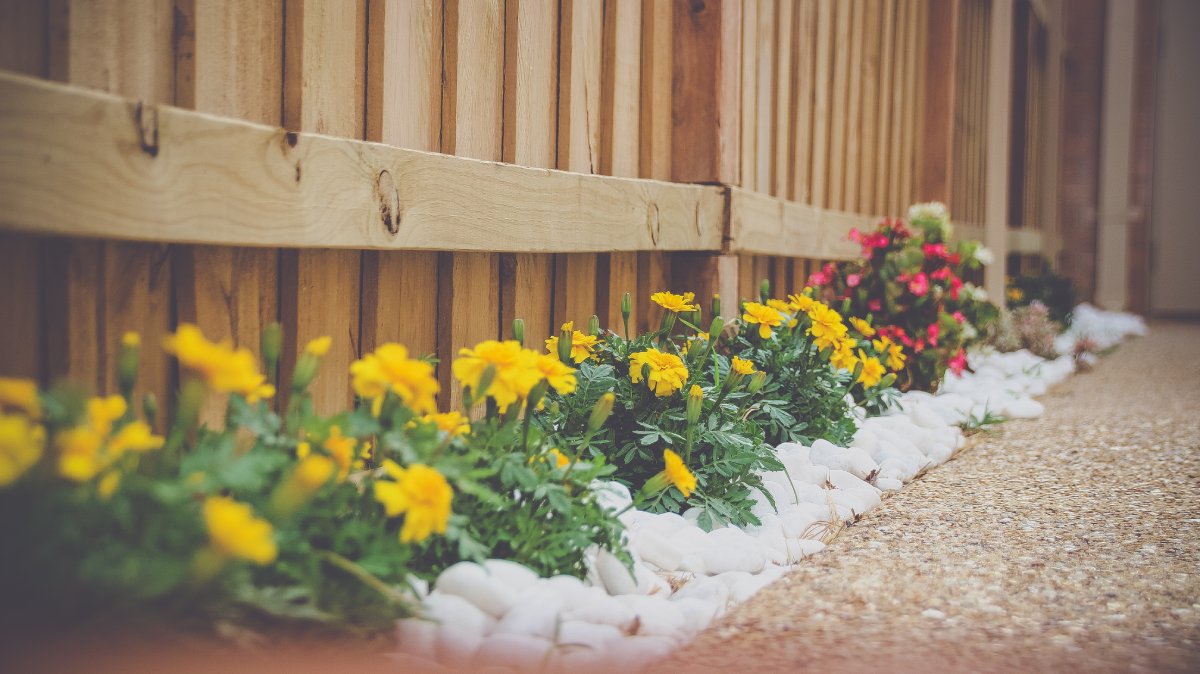
Choosing Eco-Friendly Materials
When planning your sustainable landscape, every detail matters, including the materials you use for hardscaping. Opt for materials with low environmental impact, like recycled or locally sourced stones, bricks, or concrete.
Reclaimed wood offers a rustic charm, and when sourced responsibly, it helps reduce the demand for new lumber, contributing to forest conservation efforts. Consider also permeable materials, which allow water to seep through, reducing runoff and helping to replenish groundwater supplies.
Designing for Shade and Wind Protection
Strategic hardscape design can enhance the energy efficiency of nearby buildings and the overall comfort of your outdoor space. For example, a well-placed patio or pergola can provide shade during the hottest part of the day, reducing the need for air conditioning.
Similarly, a thoughtfully positioned wall or fence can serve as a windbreak, reducing heating costs in colder months and providing a more comfortable outdoor area on windy days. Always consider the position of the sun and prevailing wind directions when planning your hardscaping.
Permeable Paving and Drainage
Effective water management is a key component of sustainable landscaping, and this includes considering how your hardscape elements contribute to this goal. Permeable paving materials, such as gravel, permeable concrete, or paving stones with spaces for vegetation, allow water to infiltrate the soil, reducing runoff and helping to prevent erosion and water pollution.
Furthermore, smart drainage design can direct water flow to where it’s most beneficial, such as garden beds or rain gardens, reducing the need for supplemental watering. This way, your hardscaping can become a key player in your landscape’s water conservation strategy.
In conclusion, sustainable hardscaping is about considering the broader impact of your choices, from the materials you select to how your designs interact with the natural environment. This mindful approach can significantly enhance the sustainability and enjoyment of your outdoor space. As we move forward, we will look at how to maintain your landscape sustainably to ensure it remains beautiful and eco-friendly for years.
Maintaining Your Sustainable Landscape
Creating a sustainable landscape is a significant step towards a more eco-friendly lifestyle. However, ensuring that your landscape remains sustainable requires regular maintenance and adhering to environmentally-friendly practices. This section delves into the importance of regular pruning and mulching, maintaining your lawn sustainably, and adjusting your care routines according to the seasons.
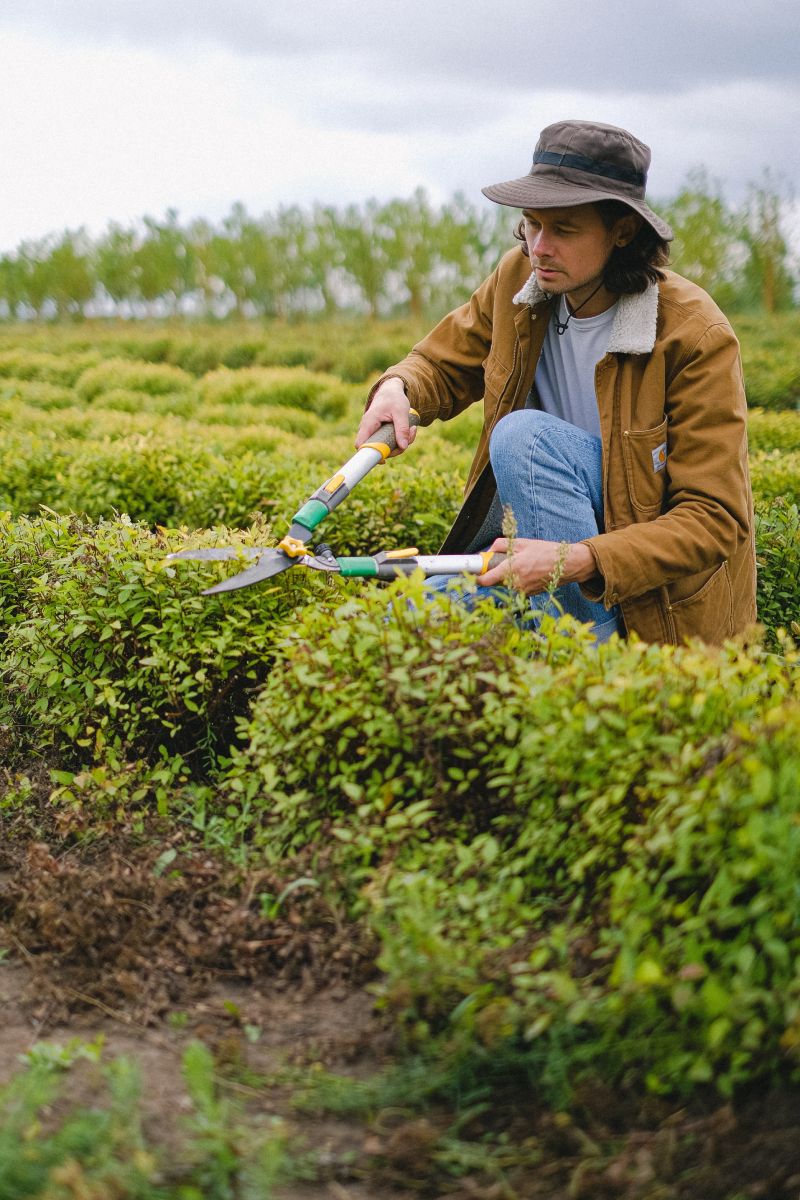
Regular Pruning and Mulching
Proper care of your plants helps keep them healthy, looking their best, and playing their part in your sustainable landscape. Regular pruning encourages plants to grow in a balanced, natural form, removes diseased or damaged parts, and promotes air circulation, reducing disease risk.
Mulching, on the other hand, plays a dual role. It improves the appearance of your beds and helps maintain soil health by preserving moisture, controlling weeds, and enriching the soil. Always opt for organic mulches like compost, shredded bark, or leaf mold, as they contribute to the nutrient content of the soil as they decompose.
Eco-Friendly Lawn Care
Lawns form an integral part of many landscapes. Still, traditional lawn care practices rely heavily on water, fertilizers, and pesticides. Adopting eco-friendly lawn care practices can significantly reduce your landscape’s environmental footprint.
Consider options like drought-tolerant grass species, which require less watering. Mow your lawn at a higher setting to encourage deeper root growth and better drought resistance, and leave grass clippings on the lawn to return nutrients to the soil. For pest and weed control, look for natural alternatives to chemical treatments.
Seasonal Landscape Care
Each season brings different demands for landscape care, and tuning in to these changes can help maintain the health and appearance of your sustainable landscape. For example, spring is an ideal time for pruning many plants, while fall is great for adding compost or mulch to prepare beds for winter.
During the hotter months, water plants deeply but less frequently to encourage deep root growth and improve drought resistance. In winter, protect sensitive plants with covers or relocate them to sheltered spots. Always base your care routine on the needs of your plants and the specific conditions of each season.
In conclusion, maintaining a sustainable landscape is an ongoing process requiring regular care and attention. But the benefits are well worth the effort. A well-maintained sustainable landscape adds beauty to your home. It contributes positively to the environment, making it a win-win situation.
Conclusion
As we draw this exploration of sustainable landscaping to a close, it’s clear that creating beautiful and eco-friendly outdoor spaces requires a holistic approach. From planning to maintenance, each step contributes to a vibrant, healthy landscape that benefits you and your family, the local ecosystem, and the planet as a whole.
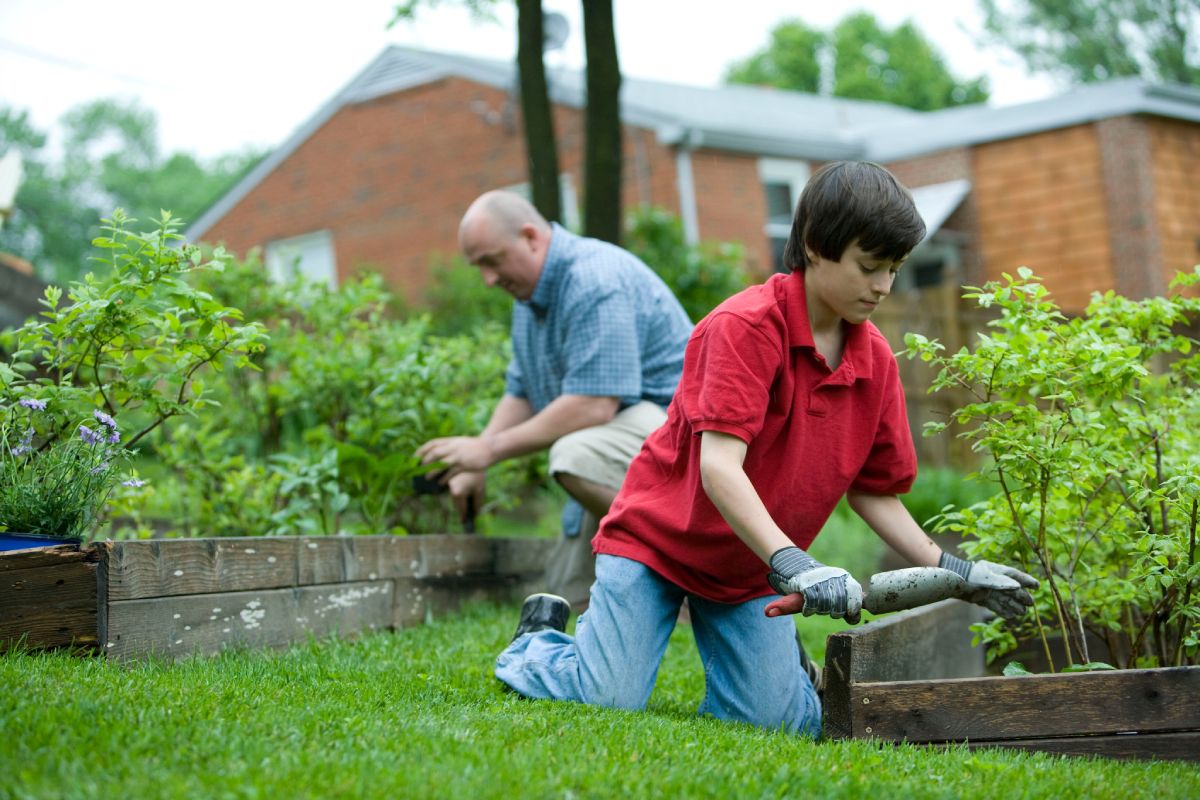
Recap of Sustainable Landscaping Practices
We began by understanding the importance and key principles of sustainable landscaping before diving into the practicalities. We explored the steps involved in planning a sustainable landscape, including assessing your current landscape, incorporating native plants, and designing with water conservation in mind.
From there, we looked at water-smart landscaping, biodiversity, soil health, and composting, followed by natural pest control and sustainable hardscaping. Finally, we covered best practices for maintaining your sustainable landscape, ensuring it remains a source of beauty and biodiversity for years.
The Impact of Sustainable Landscaping
The importance of sustainable landscaping extends far beyond aesthetics. It conserves water, promotes biodiversity, improves soil health, and reduces reliance on harmful chemical pesticides and fertilizers. It supports local ecosystems, provides habitats for beneficial insects, and contributes to reducing your overall environmental footprint.
Encouraging Readers to Create Their Sustainable Landscapes
While transitioning to sustainable landscaping may seem significant, remember that even small changes can have a big impact. Begin with one area of your garden or one aspect of your landscape and work from there. Choose native plants, adopt organic gardening practices, or start a compost pile. Each step contributes to a more sustainable landscape and a healthier planet.
In conclusion, sustainable landscaping is a rewarding journey that offers an opportunity to reconnect with nature while creating a space of beauty and tranquility. It’s an investment in your property, the environment, and future generations. So, we encourage you to take the first step towards creating your sustainable landscape, knowing that every effort contributes to a greener and more sustainable world.

